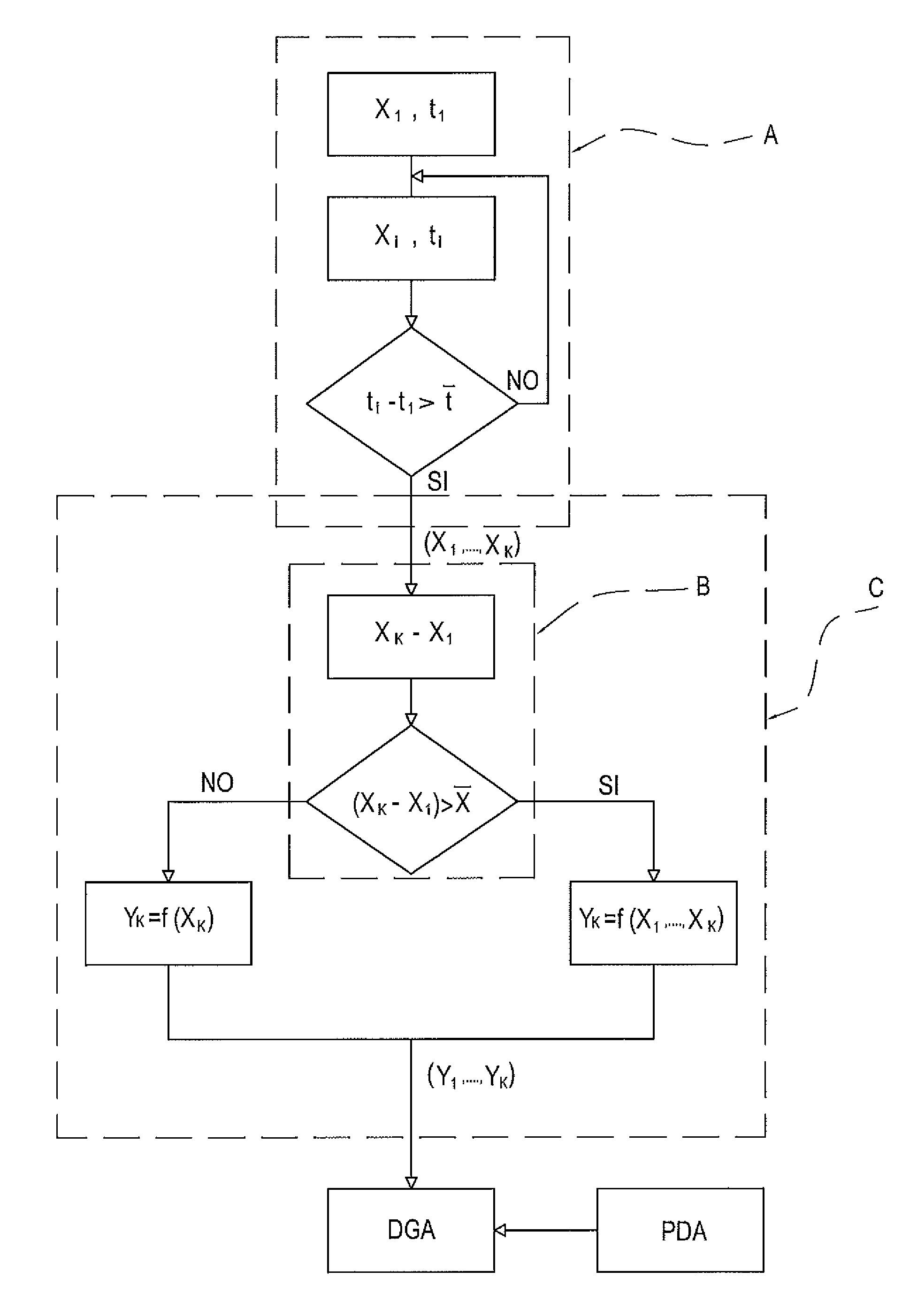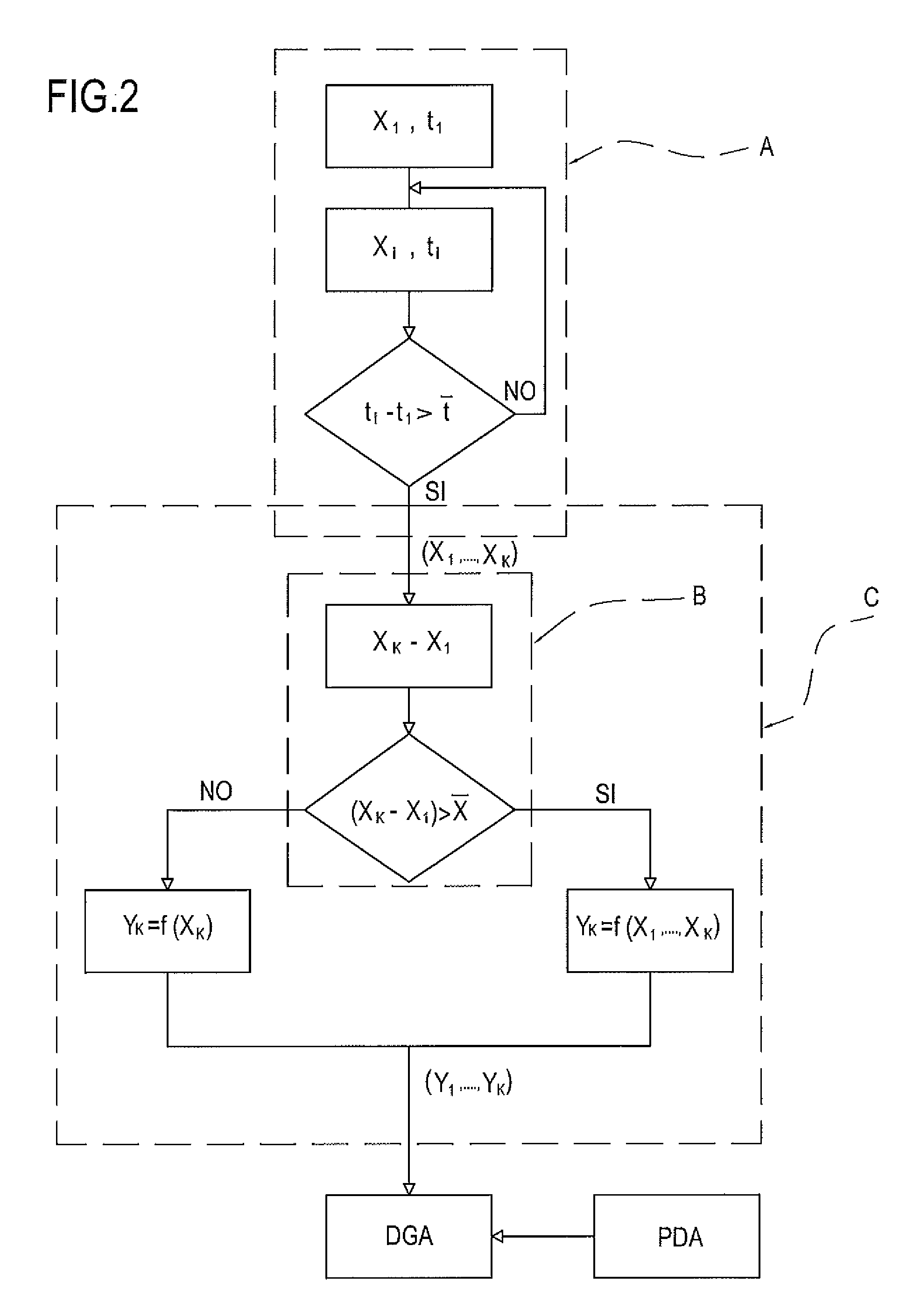Diagnostic method and apparatus for assessing the insulation condition of electrical equipment insulated with oil
a technology for electrical equipment and insulation condition, applied in the direction of testing circuits, air break switches, instruments, etc., can solve the problems of more complicated and expensive gas detection systems based on them, less reliable techniques, and relative unreliable indications
- Summary
- Abstract
- Description
- Claims
- Application Information
AI Technical Summary
Benefits of technology
Problems solved by technology
Method used
Image
Examples
Embodiment Construction
[0045]In the drawings, the numeral 11 denotes a diagnostic apparatus for assessing the insulation condition of electrical equipment 3 insulated with oil 2.
[0046]Generally speaking, the electrical equipment 3 is any electrical equipment (for medium or high voltages) insulated with oil, such as, for example, a transformer, a cable or a switch.
[0047]In particular, however, this invention addresses a diagnostic apparatus for assessing the insulation condition of a transformer insulated with oil.
[0048]Therefore, in the description which follows, the equipment 3 is a transformer.
[0049]This shall not, however, be construed as a limitation of the scope of this invention as the diagnostic apparatus 11 can be associated with other types of electrical equipment, such as, for example, a cable or any electrical equipment insulated with oil.
[0050]The oil 2 of the transformer is held in a container 7, hereinafter referred to as container 7 of the oil 2.
[0051]The diagnostic apparatus 11 is equipped...
PUM
 Login to View More
Login to View More Abstract
Description
Claims
Application Information
 Login to View More
Login to View More - R&D
- Intellectual Property
- Life Sciences
- Materials
- Tech Scout
- Unparalleled Data Quality
- Higher Quality Content
- 60% Fewer Hallucinations
Browse by: Latest US Patents, China's latest patents, Technical Efficacy Thesaurus, Application Domain, Technology Topic, Popular Technical Reports.
© 2025 PatSnap. All rights reserved.Legal|Privacy policy|Modern Slavery Act Transparency Statement|Sitemap|About US| Contact US: help@patsnap.com



